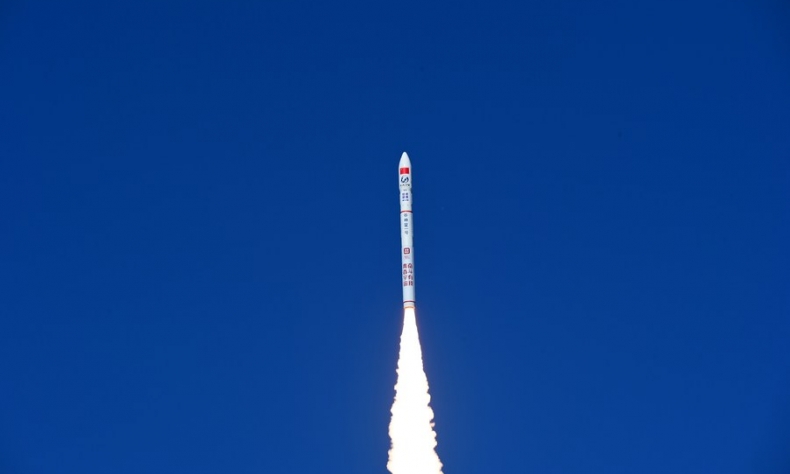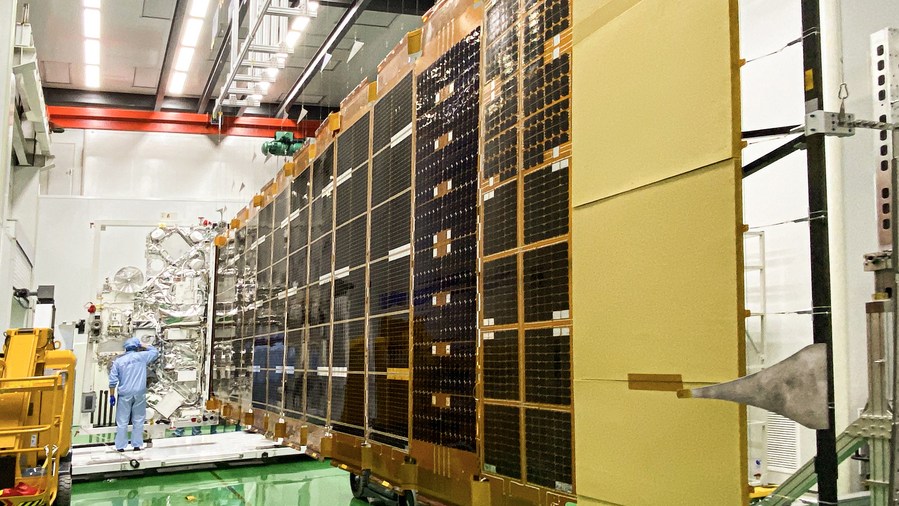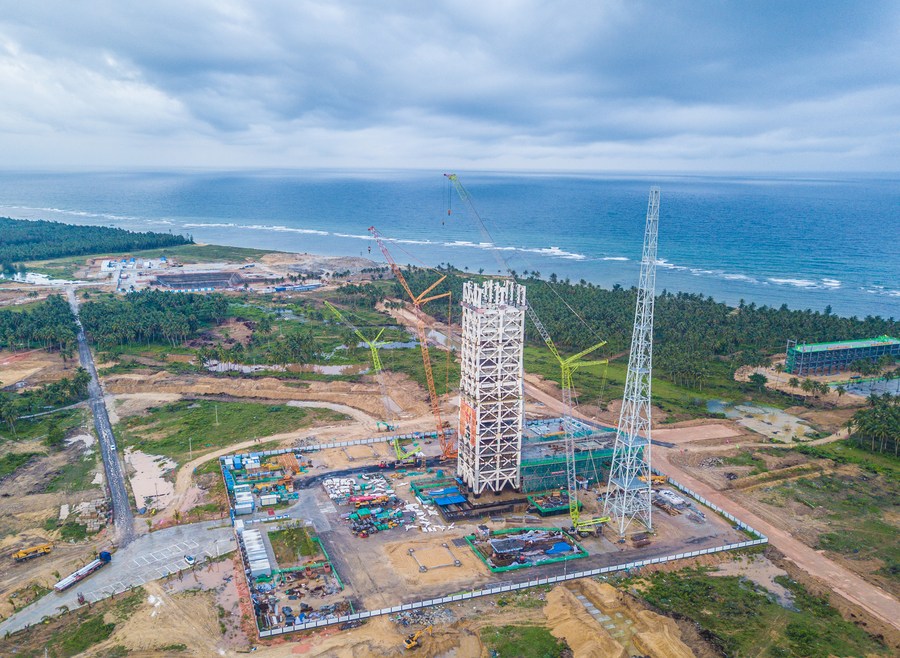Eye in the Sky

China’s commercial space industry is booming, with a wider application.
Beijing’s Yizhuang Economic-Technological Development Area is home to some of China’s top private rocket companies. The district is preparing to launch the construction of the “rocket road” to establish a joint production facility. Meanwhile, on a satellite production line in Hebi, Henan Province, researchers are carefully analysing the data sent back by a remote sensing satellite orbiting at an altitude of 528 km.
Mentioned for the first time in the Government Work Report during this year’s Two Sessions, the commercial space industry has drawn much attention. From building rockets to manufacturing satellites and providing application services, the sector is developing at astronomical speed in China.
Driven by policy support and market demand, China’s commercial space industry is growing rapidly and spans the entire value chain. According to iiMedia Research, China’s commercial space market is expected to exceed 2,300 billion yuan ($318 billion) this year.
“China’s commercial rocket industry is about to complete the first decade of its take-off phase. The year 2025 will be a defining moment, marking the beginning of an era of competition based on real power,” said Zhang Changwu, CEO of China’s LandSpace. “SpaceX has provided a living example of the viability of the commercial space industry,” he added. US-based SpaceX accounted for 43 percent of the world’s total rocket launches in 2023 with 98 launches, including two experimental launches.
Record expansion
Entering the GeeSpace satellite factory in Taizhou, Zhejiang Province, one is immediately struck by the agility of the mechanical arms and the continuous 24-hour operation of the production line. This facility is the first commercial satellite super factory in China with full production capacity and is also the home of Geely Auto.
Liu Yong, vice president of GeeSpace, explained that the factory uses intelligent and automated mass production methods inspired by the automotive industry. This approach gives it great flexibility in assembling, integrating and testing satellites of different sizes and types. The efficiency is remarkable: it takes only 28 days from order to delivery of a satellite, with an annual production capacity of 500 units and a cost reduction of 45 percent.
GeeSpace illustrates the dynamism of China’s space sector. According to People’s Daily, 113,272 new commercial space companies were established in China in 2023, an increase of 29 percent over the previous year.

The year 2015 has been cited by many as the starting point for this sector, stimulated by two national policies. One encouraged private investment in civil space infrastructure, while the other promoted diversification of investment and industrial applications. This has led to increased investment and emergence of many private companies.
According to the Blue Book of China Aerospace Science and Technology Activities 2023, China carried out a total of 26 commercial launches that year, 25 of which were successful; it also developed and launched 120 commercial satellites, accounting for 54 percent of the year’s total satellites.
At the same time, the infrastructure needed to support these activities is also expanding rapidly. The first site of the Hainan International Commercial Aerospace Launch Centre has been completed and the second site is under construction, each of which will be able to accommodate 16 launches per year. Meanwhile, the Jiuquan Satellite Launch Centre has added new commercial launch sites in recent years.
Widespread applications
“We have planned about eight to 10 launches of satellites, both on land and at sea. All of these launches will be for civilian applications, covering communications, navigation and remote sensing,” Liu Baiqi, founder and CEO of Beijing-based space technology startup Galactic Energy, told ChinAfrica. These three areas are also the main applications of the sector.
Chen Shanzhi, vice president and chief engineer of China Information Communication Technologies Group Corp., said that low-Earth orbit satellites should provide important support for industrial applications such as environmental monitoring, low-altitude economics, scientific research, maritime defence, disaster alert, ad emergency communication and rescue, among others. He estimates that in China alone, some 20 million users in border regions, including fishermen, herders and foresters, need access to the Internet via low-Earth orbit satellites.
In January, the Ministry of Industry and Information Technology, along with six other ministries, issued a directive to promote research into key technologies such as 6G and satellite internet, as well as direct connections between phones and satellites, with the aim of building a new ubiquitous, integrated, green and efficient digital infrastructure.

“Now we, the general public, can also ‘play with satellites’,” said Wang Mi, a professor at the State Key Laboratory of Information Engineering in Surveying, Mapping and Remote Sensing. For example, we can now use smart remote sensing services on our smartphones to find available parking spaces.
The economic impact of the commercial space industry is significant. Zhang Shijie, chief scientist at Galaxy Space, noted that the ratio of direct investment to output in the commercial space industry is about 1:2, with the direct impact on the national economy estimated at 8 to 14 times the initial investment.
Space in low orbit may be limited, but the commercial potential of satellite Internet is immense. According to the World Bank, more than 70 percent of Earth’s surface is still without Internet coverage, affecting more than 3 billion people. Traditional deployment of the communications network in challenging environments such as oceans, deserts and mountains is not only difficult but also costly. As a result, the sector not only has a commercial value, but is also a means of promoting connectivity on a global scale.
Many Chinese companies are looking to strengthen international cooperation in this field. In June 2023, Galactic Energy travelled to France to participate in the 54th International Paris Air Show, becoming the first Chinese company of its kind to attend the event. In February, the company was also present at the World Defence Show in Riyadh, Saudi Arabia, drawing attention to the international aerospace market.
“By actively participating in major international exhibitions, the company strengthens its exchange and cooperation with the aerospace sector on a global scale. Through its presence and presentations, it attracts more international partners to jointly contribute to the promotion of the global aerospace industry,” Liu told ChinAfrica.
 Facebook
Facebook
 Twitter
Twitter
 Linkedin
Linkedin
 Google +
Google +










